LAB REPORT
Science and Technology Making Headlines
May 27, 2022

Secretary of Energy Jennifer Granholm speaks during a Senate Energy and Natural Resources. The Department of Energy said it will release $3.5 billion to groups developing direct air capture and other technologies that remove carbon dioxide, which when released into the atmosphere causes global warming.
Try it, you might like it
The federal government is investing in machines that suck giant amounts of carbon dioxide out of the air in the hopes of reducing damage from climate change.
The Department of Energy last week said it will release $3.5 billion to groups developing direct air capture and other technologies that remove carbon dioxide, which when released into the atmosphere causes global warming.
The DOE money will support four large-scale regional direct air capture hubs that will include a network of carbon dioxide removal projects that each have the capacity to remove 1 million tons of carbon dioxide annually.
“I expect the impacts on health and land use in communities will be an important consideration,” said Roger Aines, energy program chief scientist at Lawrence Livermore National Lab, noting that facilities would use land in communities and would run on renewable energy, which would mean placing solar panels or wind turbines around them.
“The time is right for this,” Aines said. “And the only way to really know whether we’re going to like this kind of approach is to try it out.”

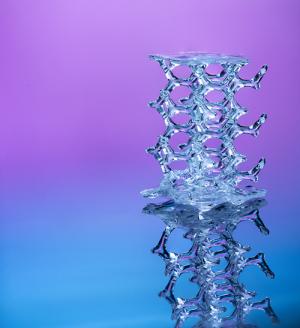
Researchers at Lawrence Livermore National Laboratory and the University of California, Berkeley demonstrated the ability to 3D-print microscopic objects in silica glass through volumetric additive manufacturing (VAM), part of an effort to produce delicate, layer-less optics that can be built in seconds or minutes. Image by Adam Lau/Berkeley Engineering.
Glass STAT
Using a new laser-based Volumetric Additive Manufacturing (VAM) approach — an emerging technology in near-instant 3D printing — researchers at Lawrence Livermore National Laboratory and the University of California, Berkeley have demonstrated the ability to 3D-print microscopic objects in silica glass, part of an effort to produce delicate, layer-less optics that can be built in seconds or minutes.
Versatile and ubiquitous, glass is increasingly found in specialized applications such as fiber optics, consumer electronics and microfluidics for “lab-on-a-chip” devices. However, traditional glassmaking techniques can be costly and slow, and 3D-printing glass often results in rough textures, making them unsuitable for smooth lenses.
Nicknamed “the Replicator” after the fictional device in “Star Trek” that can instantly fabricate nearly any object, the Computed Axial Lithography (CAL) technology developed by LLNL and UC Berkeley is inspired by computed tomography (CT) imaging methods. CAL works by computing projections from many angles through a digital model of a target object, optimizing these projections computationally, and then delivering them into a rotating volume of photosensitive resin using a digital light projector. Over time, the projected light patterns reconstruct, or build up, a 3D light dose distribution in the material, curing the object at points exceeding a light threshold while the vat of resin spins. The fully formed object materializes in mere seconds — far faster than traditional layer-by-layer 3D printing techniques—and then the vat is drained to retrieve the part.
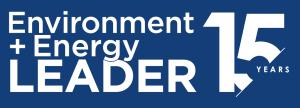
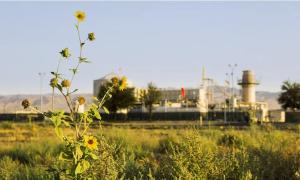
Chevron plans to launch a carbon capture and storage project in the San Joaquin Valley. Credit: Chevron.
Looking to the Lab for advice
Chevron has been active in carbon capture projects and is aiming to reduce the carbon intensity of its operations in San Joaquin Valley by launching a carbon capture and storage project there.
Carbon capture and storage has the potential to capture up to 90% of carbon emissions from industrial facilities, according to the Center for Climate and Energy Solutions. Carbon capture projects are increasingly a focus of net zero efforts, including the U.S. Department of Energy funding a Rio Tinto-led project in Minnesota and a $250 million effort called Summit Carbon Solutions, which is said to be one of the world’s largest and spans several states in the Midwestern US.
Chevron highlighted the potential of carbon capture in the Kern River area, including a report by the Lawrence Livermore National Laboratory that revealed geological storage sites in California which could help the state be carbon neutral. That 2020 report specifically mentioned the region as a promising carbon capture site due to its geologic and subsurface characteristics in addition to existing oil and natural gas production.

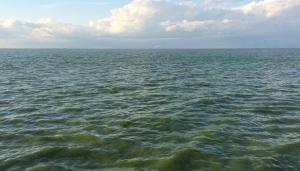
Algal blooms in Lake Erie. Credit: Adobe Stock.
Casting a net for safer water
Lawrence Livermore scientists and collaborators have used a new technique to better forecast the level of algal toxins that accumulate in Lake Erie every year.
Harmful algal blooms (HABs) are global phenomena, and in freshwater lakes and reservoirs, are caused by cyanobacteria of the genus Microcystis that produce microcystins, a suite of amino-acid-like toxins that are harmful to wildlife and humans. Understanding the environmental drivers that affect microcystin concentrations and developing forecasting capabilities are critical to protect human and environmental health and ultimately prevent future HABs.
The team used isotope labeling of the cyanotoxins to examine its degradation in Lake Erie. Using LLNL's NanoSIMS instrument, they confirmed that a small but highly active component of the microbiome was responsible for the degradation of the toxin.
Microcystins are a potent liver toxin and possible human carcinogen. Cyanotoxins also can kill livestock and pets that drink affected waters. Fish and bird mortalities also have been reported in water bodies with persistent cyanobacteria blooms. These blooms form when cyanobacteria, which are normally found in water, start to multiply very quickly. Blooms can form in warm, slow-moving waters that are rich in nutrients from sources such as fertilizer runoff or septic-tank overflows.
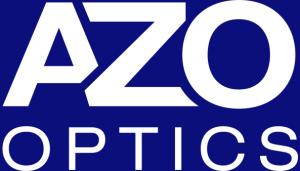
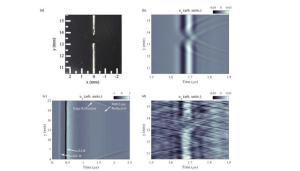
A LLNL team demonstrated that a diagnostic incorporating surface acoustic waves — generated by laser-based ultrasound — could effectively and accurately evaluate laser melt lines and find defects in laser powder bed fusion metal 3D printing by scattering acoustic energy from melt lines, voids and surface features that can be quickly detected. Image courtesy of David Stobbe/LLNL.
Finding faults in 3D printing
Researchers at Lawrence Livermore National Laboratory (LLNL) have developed a novel all-optical ultrasound technique capable of conducting on-demand melt track characterization and fault detection in a common metal 3D printing process.
Lab researchers suggest a diagnostic employing surface acoustic waves (SAW), created by laser-based ultrasound, that may uncover microscopic surface and sub-surface faults in laser powder bed fusion (LPBF) metal 3D printing.
By scattering acoustic radiation from melt lines, voids and surface characteristics that can be immediately recognized, the team claims its technology can effectively and precisely analyze laser melt lines — the tracks where its laser liquefies metal powder in LPBF printing. Optical microscopy and X-Ray computed tomography were used to confirm the findings (CT).
Surface acoustic waves have long been utilized in engineering materials to define the surface and near-surface features like cracks, pits and welds, and they also are employed in geology to identify underground structures like caves on a far longer length scale. According to experts, SAWs are well-suited for identifying melt lines in LPBF printing because of their surface and near-surface sensitivity.





